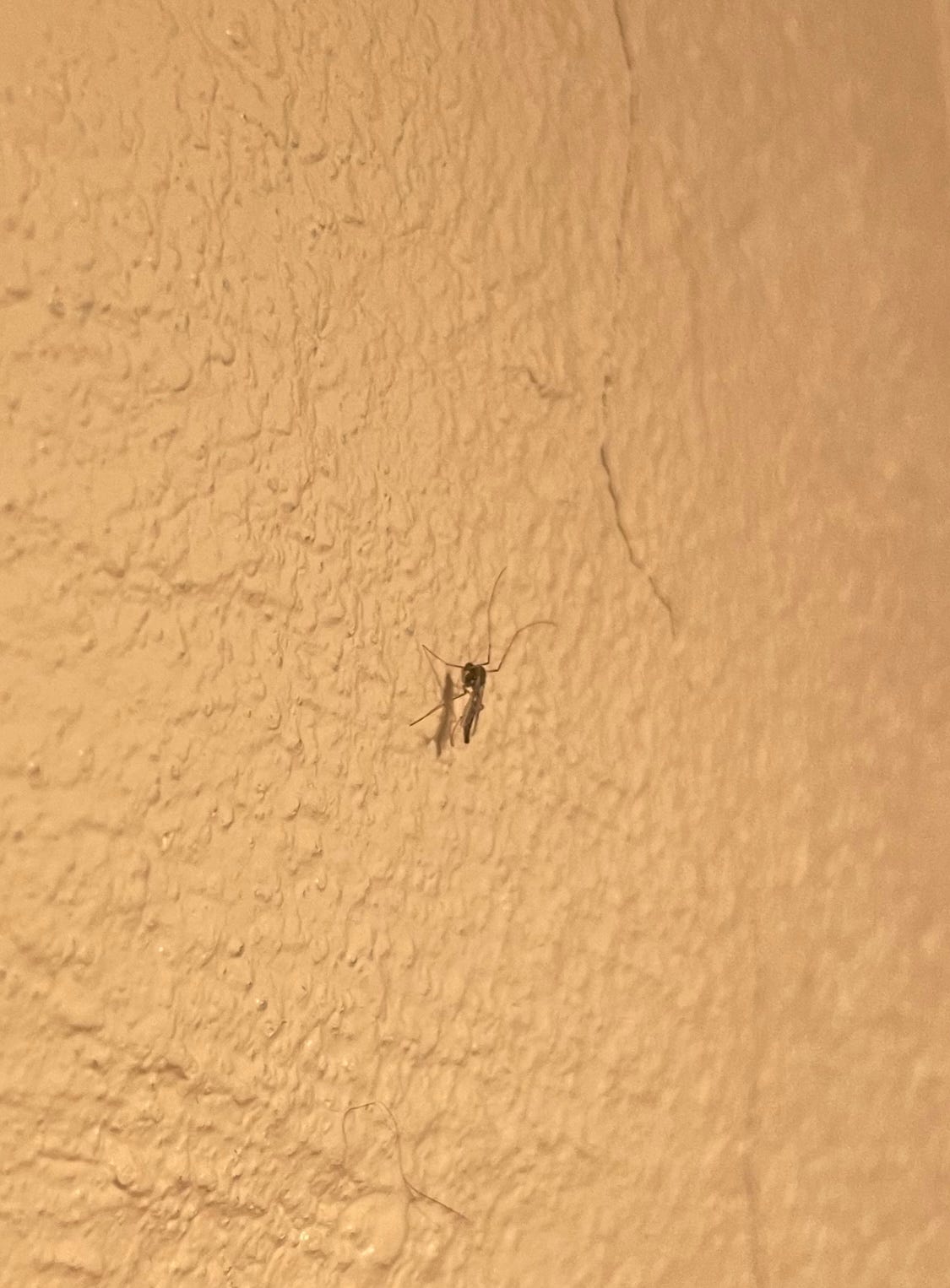ISSUE #09: Midges Are Mosquitos but Backwards (and Nice)
Sometimes friends look like foes until you get up close.
When it comes to pests, I don’t like killing things unless they are directly worsening my life. I’ll smack a mosquito, I’ll crush a tick, I’ll set up traps for drain flies and clothes moths, but, for the most part, everything else is allowed to hang out. I love a spider, I love a house centipede. If there’s a cockroach in my apartment I’ll point it out to my cat, but if he’s unavailable I’ll scoop it up in a container and take it outside because frankly I respect them too much. One day I’ll write my Cockroach Post and you’ll all be just like me.
Because I try my best to live in peaceful coexistence with living things, I’ve developed a somewhat paralyzing obsession with nonviolence. I’ll get into this more when I eventually address the spotted lanternfly in the proverbial room, but basically what this means is, when it comes to bugs, I won’t lash out at something until I know for sure what it is.
A couple of nights ago, I was on the phone with a friend when I looked up at my ceiling and saw a small insect flying around in circles, bumping against the paint as it tried to fly upwards out of my room. Even from down on the floor, I could tell by its floaty flight pattern and thin, brown body that it was a mosquito, or at least shaped like one. But if it was a mosquito, why would it be up there, instead of down here, biting me?
I lost track of it until a few hours later, when, as I was reading in bed at the end of the night, I saw it had landed on the wall right next to my head, attracted to the pool of light coming from my lamp. It was in prime slapping range, but as I was winding up, I noticed something. We all know the telltale mosquito silhouette: thin bodies, long mouths, long legs, two of which curl upwards when they’re at rest. Not all mosquitoes lift their hind pair of legs in this way, but the ones we’re used to do, probably using them as an extra set of antennae.
This creature, though, was different. Instead of its hind legs, its front pair of legs were raised in front of its head, as if someone had been putting a mosquito together and switched some of the parts to the wrong places. It also didn’t have the long proboscis mouthpart, which made me think that, although everything else about it was giving mosquito, maybe it was something else.
A quick google of “bug that looks like mosquito” gave me the answer I was looking for. A chart popped up a few times on Google Images, showing three different bugs: a mosquito, a cranefly, and a nonbiting midge. I knew I wasn’t looking at a cranefly, because they’re considerably bigger than mosquitoes and hold their wings perpendicular to their bodies when they’re at rest, instead of folding them lengthwise on top of each other.
But the midge. Ah, the midge. The midge was what I was searching for, and it honestly shocked me that I had never actually looked up what midges look like. I’d seen the word before, mainly in books, where lakesides or swampy areas are often described as blanketed in “clouds of midges,” or characters are “swarmed by midges.” To me, a “midge” was something like a no-see-um, a tiny biting insect the size of a fruit fly hungry for my blood. No-see-ums are, indeed, one type of midge—specifically a “biting midge,” which meant that the nonbiting one not only existed, but was hanging out right next to my head.
Nonbiting midges are part of the fly family Chironomidae, which boasts more than 10,000 species worldwide, including tiny wingless Belgica antarctica, Antarctica’s largest terrestrial animal. In North America, the winged ones are known by many names: “lake flies,” “bay flies,” “sand flies,” “muffleheads,” “muckleheads,” “blind mosquitoes,” “chizzywinks.” They hold their front legs upwards in an elegant curl, they have small nearly invisible mouthparts, and lovely “plumose” antennae that look like miniature fluffy feathers. As adults, they live for a few days, and are a favorite food of fish, and so a popular template for fishing flies.
Like mosquitoes, they’re mainly found around sources of water, and though I don’t live very near any bodies of water it’s been very rainy these past couple of weeks, so maybe that’s where this one came from, floating into my apartment to get away from the damp before realizing its mistake too late. I didn’t see it again after I turned my light off and went to sleep, so hopefully it found its way back out. I’m glad that, by staying my hand and paying attention to what I saw, I was able to be patient and learn something new.
If anyone would like to reward me with this shirt, thanks in advance.




As someone with a deep unease towards all kinds of insects - for years, I've been afraid of having a beer outside and having a fly land in the drink without me noticing, and IT ACTUALLY HAPPENED IN 2022 - your newsletter is a real exercise in exposure therapy to me. But goddamnit, it's good shit.